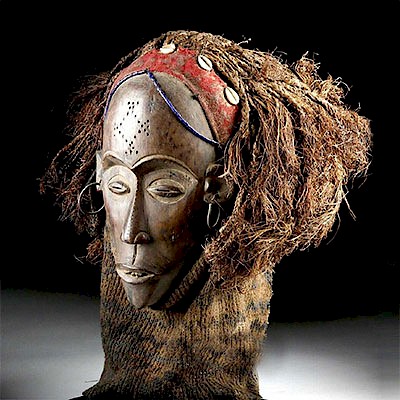Large Venezuelan Tairona Stone Batwing Pectoral
Lot 91f
About Seller
Artemis Fine Arts
686 S Taylor Ave, Ste 106
Louisville, CO 80027
United States
Selling antiquities, ancient and ethnographic art online since 1993, Artemis Gallery specializes in Classical Antiquities (Egyptian, Greek, Roman, Near Eastern), Asian, Pre-Columbian, African / Tribal / Oceanographic art. Our extensive inventory includes pottery, stone, metal, wood, glass and textil...Read more
Estimate:
$1,200 - $1,800
Absentee vs Live bid
Two ways to bid:
- Leave a max absentee bid and the platform will bid on your behalf up to your maximum bid during the live auction.
- Bid live during the auction and your bids will be submitted real-time to the auctioneer.
Bid Increments
| Price | Bid Increment |
|---|---|
| $0 | $25 |
| $300 | $50 |
| $1,000 | $100 |
| $2,000 | $250 |
| $5,000 | $500 |
| $10,000 | $1,000 |
| $20,000 | $2,500 |
| $50,000 | $5,000 |
| $100,000 | $10,000 |
| $200,000 | $20,000 |
About Auction
By Artemis Fine Arts
Apr 4, 2019
Set Reminder
2019-04-04 10:00:00
2019-04-04 10:00:00
America/New_York
Bidsquare
Bidsquare : Ancient / Ethnographic From Around The World
https://www.bidsquare.com/auctions/artemis-gallery/ancient-ethnographic-from-around-the-world-4003
Ancient art from Egypt, Greece, Italy and the Near East, as well as Asian, Pre-Columbian, Native American, African / Tribal / Oceanic, Spanish Colonial, Russian Icons, Fine art, much more! All categories, all price ranges... all legally acquired and guaranteed to be as described or your money back Artemis Fine Arts info@artemisgallery.com
Ancient art from Egypt, Greece, Italy and the Near East, as well as Asian, Pre-Columbian, Native American, African / Tribal / Oceanic, Spanish Colonial, Russian Icons, Fine art, much more! All categories, all price ranges... all legally acquired and guaranteed to be as described or your money back Artemis Fine Arts info@artemisgallery.com
- Lot Description
Pre-Columbian, found in Venezuela, traded from the Colombian Tairona culture, ca. 10th to 16th century CE. A large example of a "batwing" pectoral, so called because of its resemblance to the flying mammal, although its actual meaning is unclear. The stone it is carved from is beautiful, pale green with sparkling bands of inclusions. Two surface fissures are filled with reddish matter - possibly cinnabar, deliberately put there as a pigment, or possibly accumulated soil. The "wings" widen slightly towards their terminals; the "head", a low rectangle at the upper center, is drilled through twice for suspension. Items of this general shape have been found from southern Mexico to Venezuela as well as on some islands in the Caribbean, often found in caches of other stone artifacts buried under floors of houses and temples. The Kogi and Ica people, who are direct descendants of the Tairona, wear similar items as rattles, attached to the elbows of dancers. They may have been used similarly in the pre-Columbian era. Size: 12.7" W x 2.75" H (32.3 cm x 7 cm)
See a similar example at the Metropolitan Museum of Art: https://www.metmuseum.org/art/collection/search/317445
Provenance: private Tong collection, Florida, USA, by inheritance from the collection of Louis L. Scher, found in Venezuela during the 1960s and 1970s
All items legal to buy/sell under U.S. Statute covering cultural patrimony Code 2600, CHAPTER 14, and are guaranteed to be as described or your money back.
A Certificate of Authenticity will accompany all winning bids.
We ship worldwide and handle all shipping in-house for your convenience.
#145094Intact, with a few tiny nicks from peripheries commensurate with age. Light deposits on surface.Condition
- Shipping Info
-
All shipping is handled in-house for your convenience. Your invoice from Artemis Gallery will include shipping calculation instructions. If in doubt, please inquire BEFORE bidding for estimated shipping costs for individual items.
-
- Buyer's Premium



 EUR
EUR CAD
CAD AUD
AUD GBP
GBP MXN
MXN HKD
HKD CNY
CNY MYR
MYR SEK
SEK SGD
SGD CHF
CHF THB
THB













